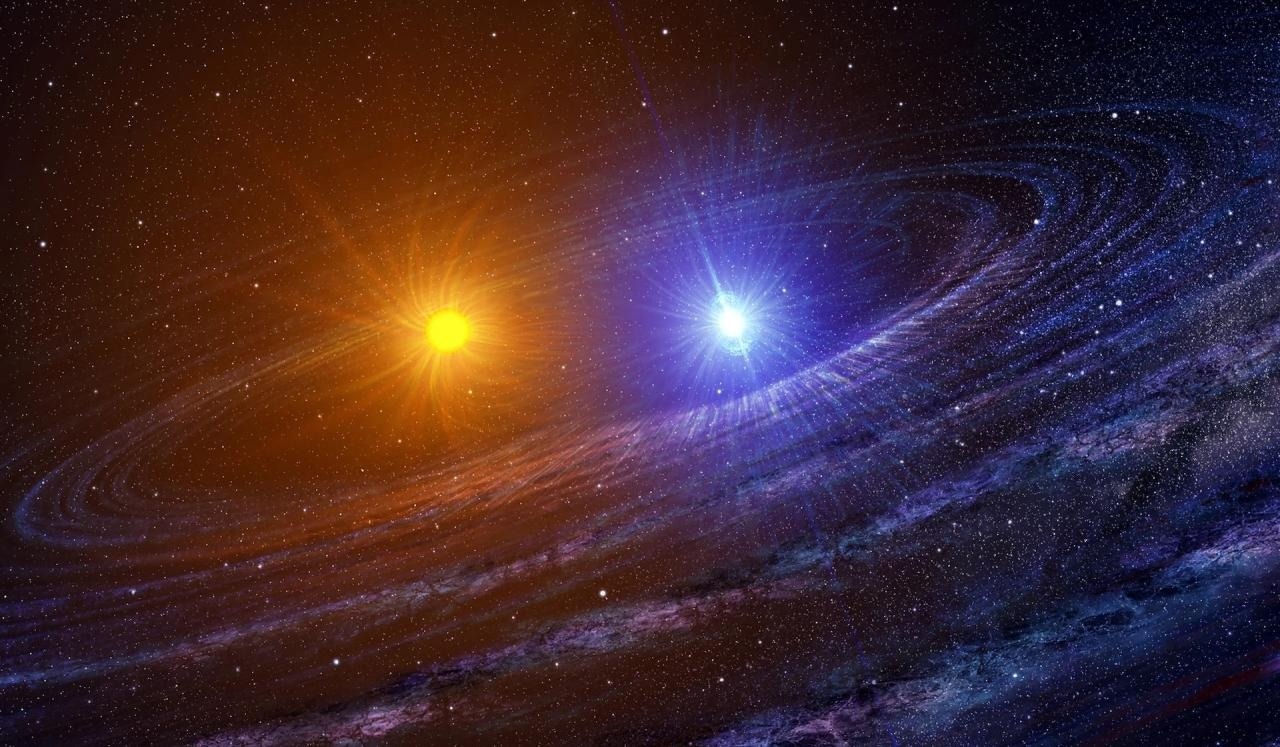Mar 25 2024Reviewed by Lexie Corner
A global study headed by the Instituto de Astrofísica de Canarias (IAC) has discovered clues about the composition of blue supergiants, which are among the brightest and hottest stars in the universe.
 Artistic image of a binary system of a red giant star and a younger companion that can merge to produce a blue supergiant. Image Credit: Casey Reed, NASA
Artistic image of a binary system of a red giant star and a younger companion that can merge to produce a blue supergiant. Image Credit: Casey Reed, NASA
Despite being frequently observed, the origin of these stars has long been a mystery discussed for many years. The majority of blue supergiants may have formed from the merger of two stars bound in a binary system, according to strong evidence found by IAC researchers after simulating novel stellar models and analyzing a sizable data sample in the Large Magellanic Cloud. The study was published in The Astrophysical Journal Letters.
B-type blue supergiants have masses ranging from 16 to 40 times that of the Sun and are extremely bright and hot stars—at least 10,000 times more luminous and 2 to 5 times hotter than the Sun. According to conventional stellar lore, they should be rare because they are predicted to occur during a very rapid phase of evolution. So why do humans witness such a multitude of them?
Most blue supergiants are known to be single, meaning they do not have any discernible gravitationally bound companions, which provides a crucial hint about their origin. Nonetheless, the majority of young massive stars are known to form in binary systems that have companion stars. Blue supergiants: why are they single? The explanation is that blue supergiants are created when massive binary stellar systems “merge.”
An international team of computational and observational astrophysicists conducted a groundbreaking study under the direction of IAC researcher Athira Menon. The team simulated detailed models of stellar mergers and examined a sample of 59 early B-type blue supergiants in the Large Magellanic Cloud, a Milky Way satellite galaxy.
We simulated the mergers of evolved giant stars with their smaller stellar companions over a wide range of parameters, taking into account the interaction and mixing of the two stars during the merger. The newly-born stars live as blue supergiants throughout the second longest phase of a stars' life, when it burns helium in its core.
Athira Menon, Researcher, Instituto de Astrofísica de Canarias
“The results obtained explain why blue supergiants are found in the so-called ‘evolutionary gap’ from classical stellar physics, a phase of their evolution where we would not expect to find stars,” Artemio Herrero, IAC Researcher and Co-Author of the study.
However, can such mergers also explain the measured properties of blue supergiants?
Remarkably, we found that stars born from such mergers have greater success in reproducing the surface composition, particularly the nitrogen and helium enhancement, of a large fraction of the sample than conventional stellar models. This indicates that mergers may be the dominant channel to produce blue supergiants.
Danny Lennon, Researcher and Study Participant, Instituto de Astrofísica de Canarias
The study highlights the critical role that stellar mergers play in the morphology of galaxies and their stellar populations, and it takes a significant step toward solving a longstanding mystery regarding the formation of blue supergiants. The following phase of the research will investigate how these blue supergiants' explosions affect the black hole-neutron star landscape.
Journal Reference:
Menon, A., et al. (2024) Evidence for Evolved Stellar Binary Mergers in Observed B-type Blue Supergiants. The Astrophysical Journal Letters. doi.org/10.3847/2041-8213/ad2074.
Source: https://www.iac.es/en